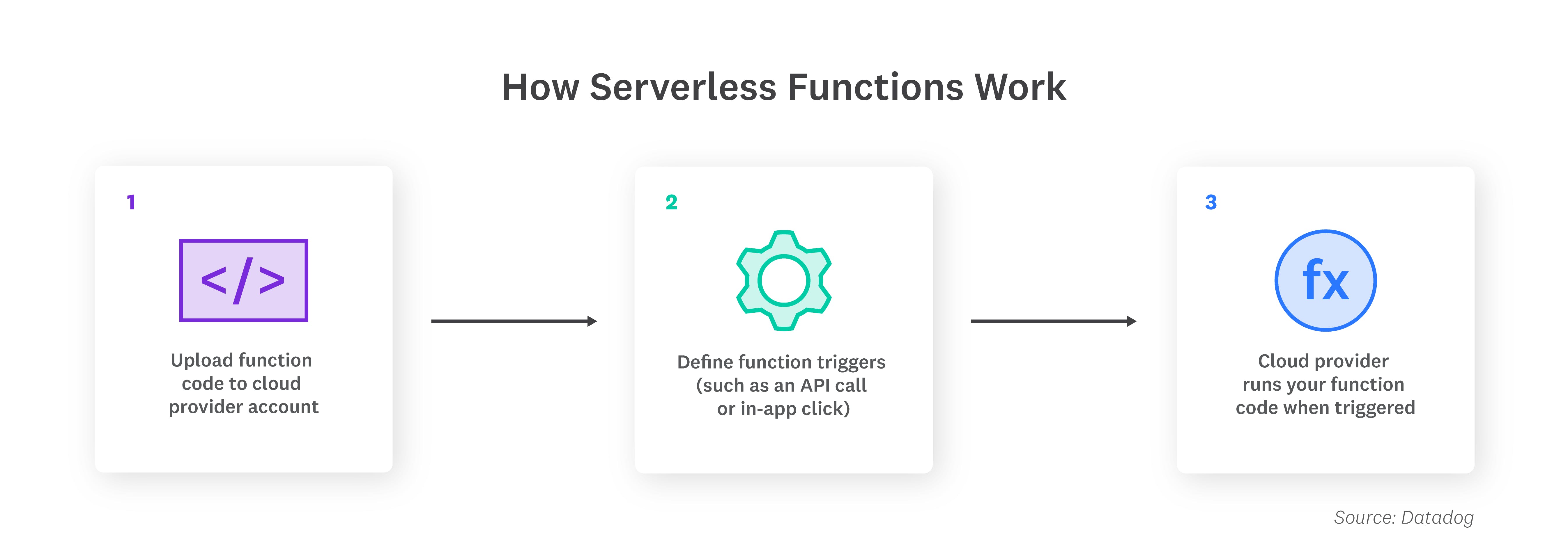Serverless workflows go mainstream to meet data demands


Adam White
Content Marketing Associate @ Tray.io
Learn why serverless is one of the key megatrends in integration and automation in 2022 and beyond.
Serverless workflows go mainstream to meet data demands
Serverless workflows—which companies are increasingly using to manage complex processes via serverless architecture—are becoming the norm as part of the emerging future of work. Coming out of the last two years, it’s clear that the business IT landscape is shifting toward prioritizing containers over monoliths, event triggers over schedules, and automation over repetitive tasks.
What’s causing so much change? For one, businesses are living in the aftermath of the “SaaS explosion”—a massive increase in the number of apps that businesses use. Research suggests the average enterprise uses more than 1,200 different cloud applications. This explosion in SaaS apps has naturally led to an explosion of data, estimated to grow an average of 23% annually over the next 3 years according to IDC. And for many businesses, more data means bigger data silos, which lead to significant challenges in efficiently managing data.

The average enterprise uses more than 1,200 cloud applications. Image courtesy Netskope.
In addition, other trends are changing the way companies do business, such as digitization, the use of digital technology to enhance a company’s business model; developer scarcity; and an increasingly distributed workforce post-pandemic. IT organizations are now under renewed pressure to make digital transformation a reality to support a workforce that relies on software applications more than ever. As a result, data integration has become a core focus of many organizations’ digital transformation initiatives. Successful data integration breaks down data silos so that teams across the organization can make the absolute most of their data, without having to rely on time-consuming manual work.
Beyond utilizing integrations to unsilo data, modern companies are also ensuring they can properly scale their mission-critical processes with serverless computing. Serverless provides businesses with a flexible and scalable way to stand up data integrations without breaking the bank. In this blog, we’ll discuss how businesses are using serverless workflows to achieve their data integration projects and to set themselves up for success with powerful process drivers such as automation.
How serverless gives you the power to scale
Serverless computing is a modern approach to software and data management that lets developers build and run applications without worrying about server administration, such as capacity planning, patching, provisioning, or management. With a serverless architecture, cloud providers, such as Amazon Web Services (AWS), handle maintaining and scaling server infrastructure while users can focus on deploying and managing their processes.

An example of how serverless workflows operate. Image courtesy Datadog.
Here’s how serverless workflows work: Developers write code as a discrete list of functions, and each function performs a specific task in response to an event trigger, like a form submission or HTTP request. Devs then deploy their functions and triggers to their provider, which runs the functions on a running server (or spins one up if none are available). Technically, when developers aren’t running any functions, no servers need to exist to support them.
Google refers to serverless workflows as the “natural evolution of cloud-native computing” since they offer a low-maintenance, highly scalable method for development. IT teams only need to focus on event-driven execution rather than on providing enough resources between the core app and server maintenance. With developers fully focused on building and deploying applications, organizations can better focus on data integration and other digital transformation projects - which is why IT professionals are rapidly adopting serverless cloud services.

IT professionals are rapidly adopting serverless cloud services for their use cases. Image courtesy CBInsights.
Top 5 benefits of serverless workflows
Surveys suggest that about 40% of organizations have adopted serverless architecture in some form or another. As companies continue to ramp IT spending and accelerate their digital transformation initiatives, serverless will continue to be the norm for development and data management. Here are the main reasons why enterprises and smaller organizations alike are going serverless.
1. Reduced operational costs
The main draw of serverless computing is its pay-per-function pricing model. Since serverless spins up instances of servers as needed, scales them to meet traffic demands, and scales to zero when no longer called, serverless customers pay only for the server resources they use.
2. Improved application performance
Even a “serverless” system does involve servers somewhere. But rather than keeping their own servers on-premise or in a data center, serverless users rely on providers to host external servers that are geographically nearby. As such, serverless providers can provide significantly reduced latency to their customers.
3. Flexibility to scale resources up and down
Serverless applications can scale automatically as usage increases due to their function-as-a-service (FaaS) model. Whether it's a single, massive user request or a sudden surge of requests, serverless applications can handle fluctuations in traffic with much more flexibility than traditional servers that only serve a fixed quantity of bandwidth.
4. Faster development
With serverless, IT teams manage only their apps, not their servers. Since the burden of provisioning, configuring, managing, and scaling server infrastructure falls on cloud providers, IT teams can focus on developing core applications.
5. Improved productivity
With traditional application infrastructures, developers spend hours each week maintaining and improving their server infrastructure. By removing hours of server management, serverless applications empower IT teams to better manage their time and allocate resources.

A broader look at some of the most cited benefits of serverless. Image courtesy New Relic.
How serverless workflows impact businesses today
Companies are turning to serverless for both internal use cases and for third-party providers. Serverless provides flexibility and scalability to support a growing list of valuable enterprise use cases:
Customer relationship management (CRM)
Data analytics/business intelligence
Finance
Database applications
HR applications
Engineering
Streaming media applications
Enterprise resource planning
Serverless workflows: A megatrend for modern business
Modern businesses are taking advantage of important tech trends and processes such as serverless workflows to scale their processes and edge out their competitors. Learn more about the five megatrends in integration and automation in the full infographic and webinar.